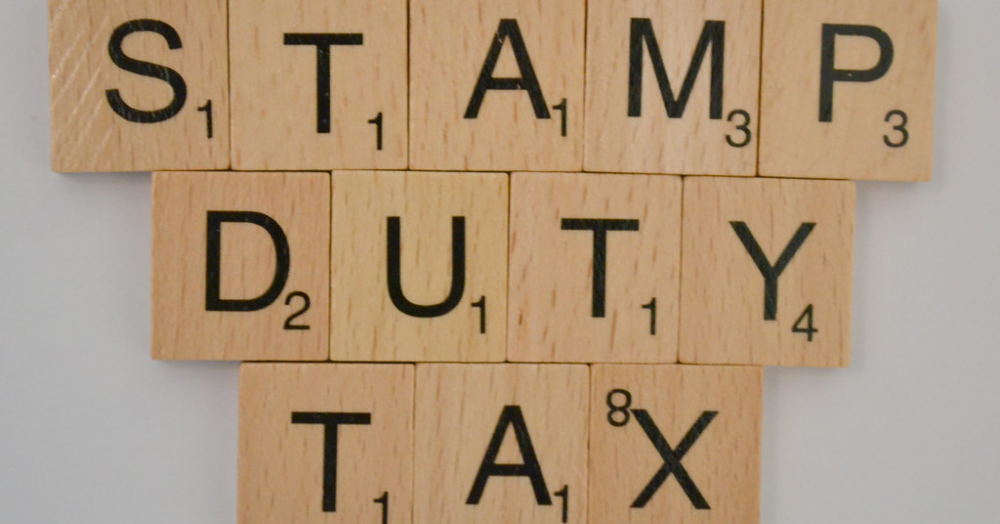Charged to buyers purchasing a property - click through for full details
THE COMPLETE STAMP DUTY TAX GUIDE
When it comes to buying a home, there are a lot of expenses you need to take into consideration. Along with legal costs and agents fees, it is likely that you will also have to pay stamp duty or land tax. Here is everything you need to know about how much stamp duty or land tax you will have to pay on your next home.
Stamp Duty Land Tax - England and Northern Ireland
What is Stamp Duty Land Tax?
Stamp Duty - or Stamp Duty Land Tax (SDLT) in official terms - is charged to buyers in England and Northern Ireland when purchasing a residential property or piece of land that costs more than £125,000, or £300,000 for first-time buyers. This tax applies to both freehold and leasehold properties – whether you’re buying outright or with a mortgage.
How much is Stamp Duty Land Tax?
Main residence
SDLT is calculated based on the value of the home. The table explains how the rate you pay varies depending on the price of the property.
To help make sense of the price brackets, if you bought a property for £350,000 for example, the Stamp Duty payable would be:
- 0% on the first £125,000,
- 2% on the second £125,000 (£2,500), and
- 5% on the final £100,000 (£5,000)
- In total, you would pay £7,500.
But-to-let or additional properties
If you are purchasing a property in England and Northern Ireland costing £40,000 or more, which is not considered your main residence, you must pay an increased rate of tax (or additional dwelling supplement) of 3%.
Anything other than your main residence is classed as a ‘second home’ - this could be a holiday let, a property bought as an investment or somewhere you are helping another family member to buy - even if your main home is overseas.
This charge does not apply to caravans, mobile homes, houseboats or plots of land.
Whilst Stamp Duty is charged on a tiered basis, the 3% surcharge effectively works as a slab tax. This means that, if you buy a second home with a purchase price of £300,000, the additional surcharge would be £9,000 (3% of the entire price). This is in addition to the £5,000 Stamp Duty bill that would need to be paid on a home of this value, bringing the total payable to £14,000.
It is important to remember that if the property you are buying replaces your main residence, you will not be liable for the 3% surcharge, even if you own additional properties (such as a second home or a flat you rent out) at the same time. However this can be a complex area and you should seek advice from a solicitor or conveyancer.
Joint ownership and Stamp Duty
If you already own a property and then jointly buy a property with a friend or partner, before selling your existing main residence, the 3% surcharge may still apply, regardless of whether your partner also owns a home or not. You may however be able to claim this back, as long as you meet the criteria terms.
What if I’m a first-time buyer?
Following the 2017 Autumn Budget, SDLT was scrapped for first-time buyers in England and Northern Ireland, on properties up to the value of £300,000.
A reduced rate of tax will be applied for properties up to £500,000, where first-time buyers will pay 5% tax on the difference.
So, to break it down, this means that if you’re purchasing your first home at a cost of £350,000, the Stamp Duty payable would be 0% on the first £300,000, and 5% on the remaining £50,000 (£2,500) – so in total, you would pay just £2,500.
In the 2018 Autumn Budget Statement, the Chancellor of the Exchequer announced that all first-time buyers of Shared Ownership properties would also be able to benefit from the Stamp Duty relief. The relief was applied retrospectively, meaning that first-time buyers who have bought a Shared Ownership home since 22 November 2017 are eligible to claim back any Stamp Duty paid on the initial transaction.
How and when do I pay Stamp Duty Land Tax?
You must file an SDLT return and pay the tax within 14 days of taking possession of your new property (for transactions that took place on or before 28 February 2019 the time limit was 30 days).
In most cases, your solicitor or conveyancer should be able to help you with this but if not, you will need to contact HMRC directly to make the payment.
If you fail to make payment within 30 days, HMRC may charge you a penalty fee and/or interest.
Additional rate refunds
If you purchase a new home but there’s a delay in selling your previous residence, you will still be liable to pay higher Stamp Duty rates for additional properties as you’ll now own two properties.
However, you can request a refund for the amount above the normal Stamp Duty rates if:
- you sell your previous main residence within three years, and
- you claim the refund within three months of the sale of your previous main residence, or within 12 months of the filing date of your self-assessment tax return, whichever comes later.
Visit gov.uk details on how to apply for a refund.
Are there any exemptions?
You may be eligible for tax relief in certain situations, which can reduce the amount you pay.
For example, SDLT doesn’t apply if you have been left property in a will or receive it as a gift – however other taxes might apply (such as inheritance tax). You will also be exempt if the property has been transferred to you following a divorce, separation or the end of a civil partnership.
